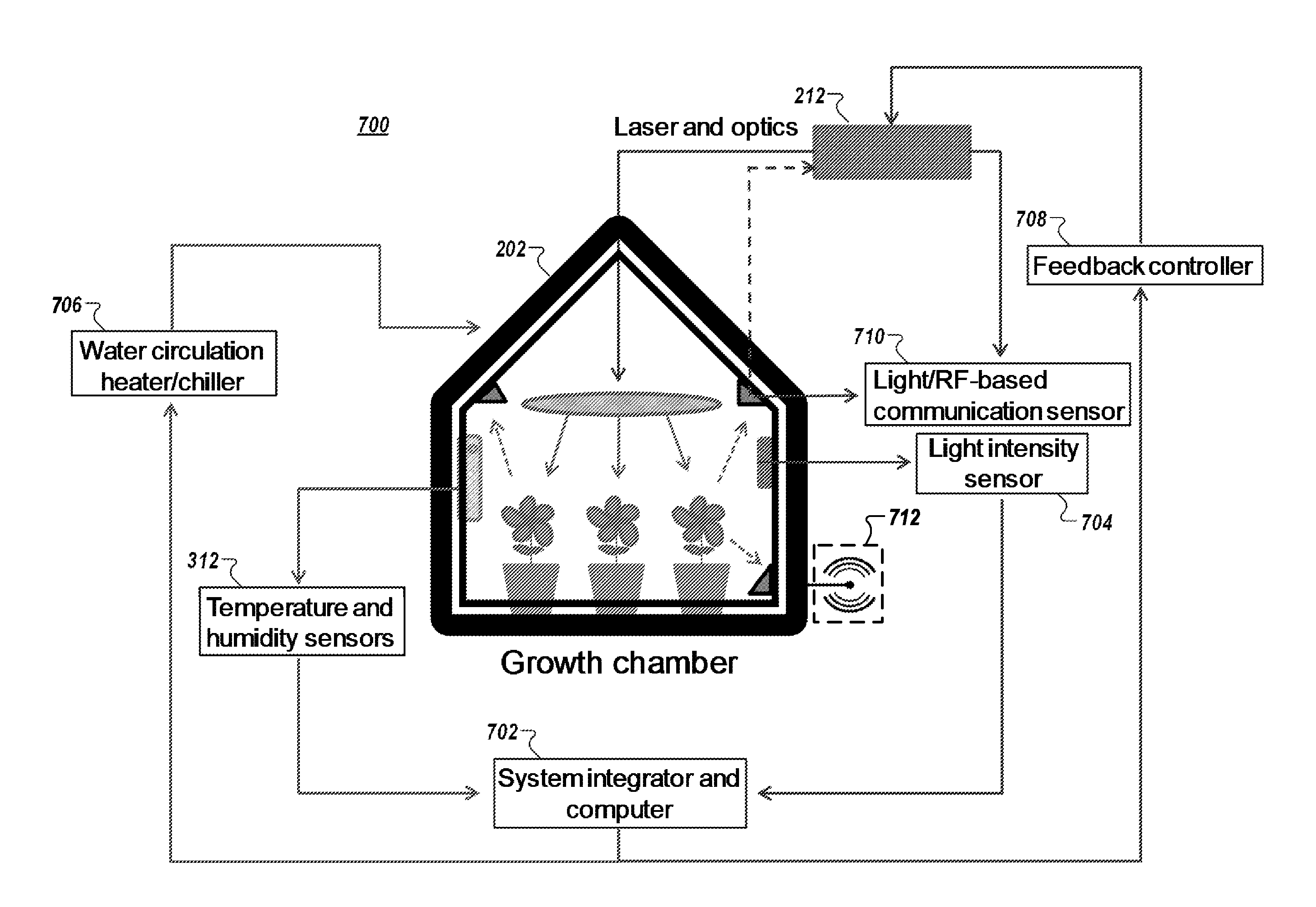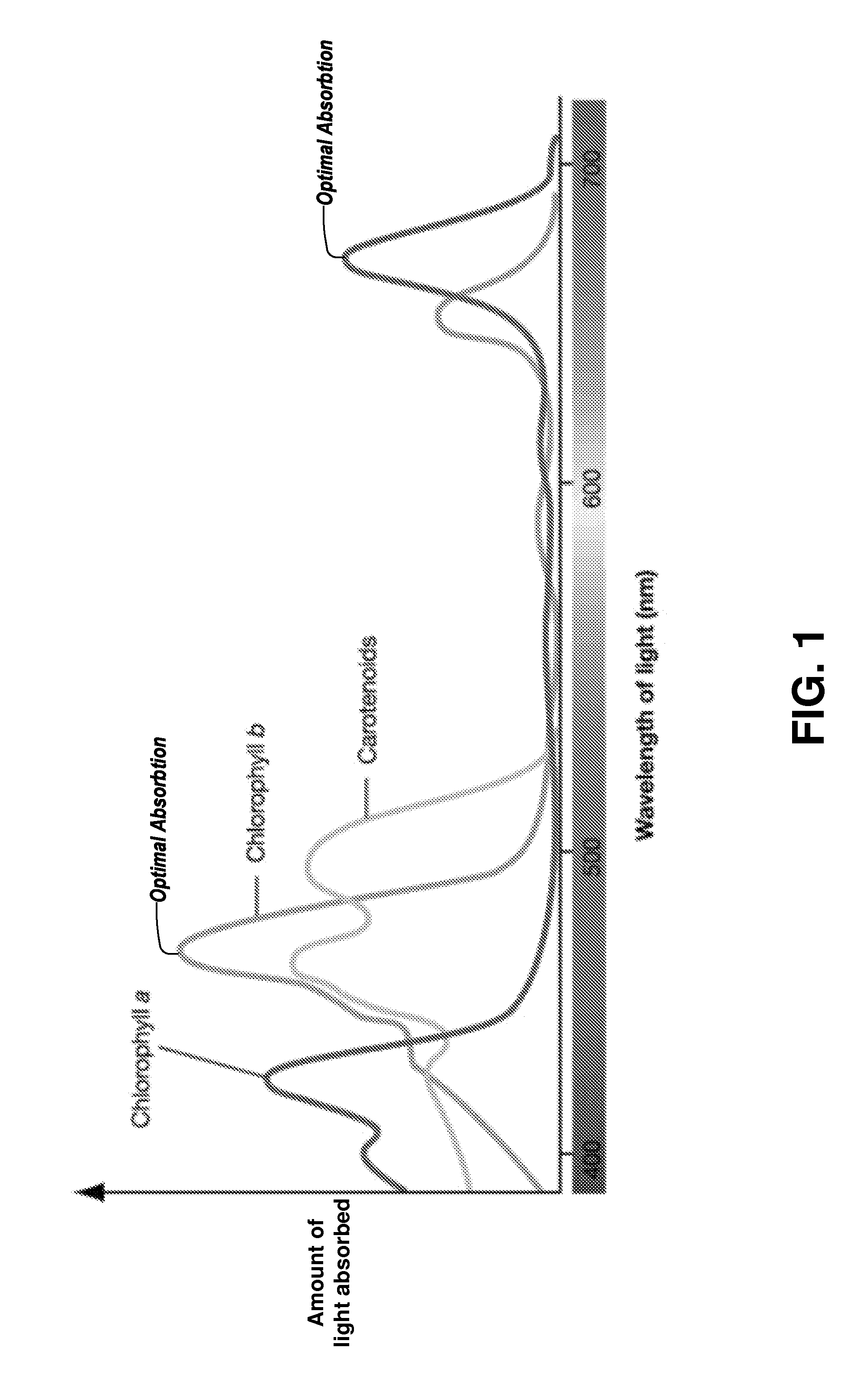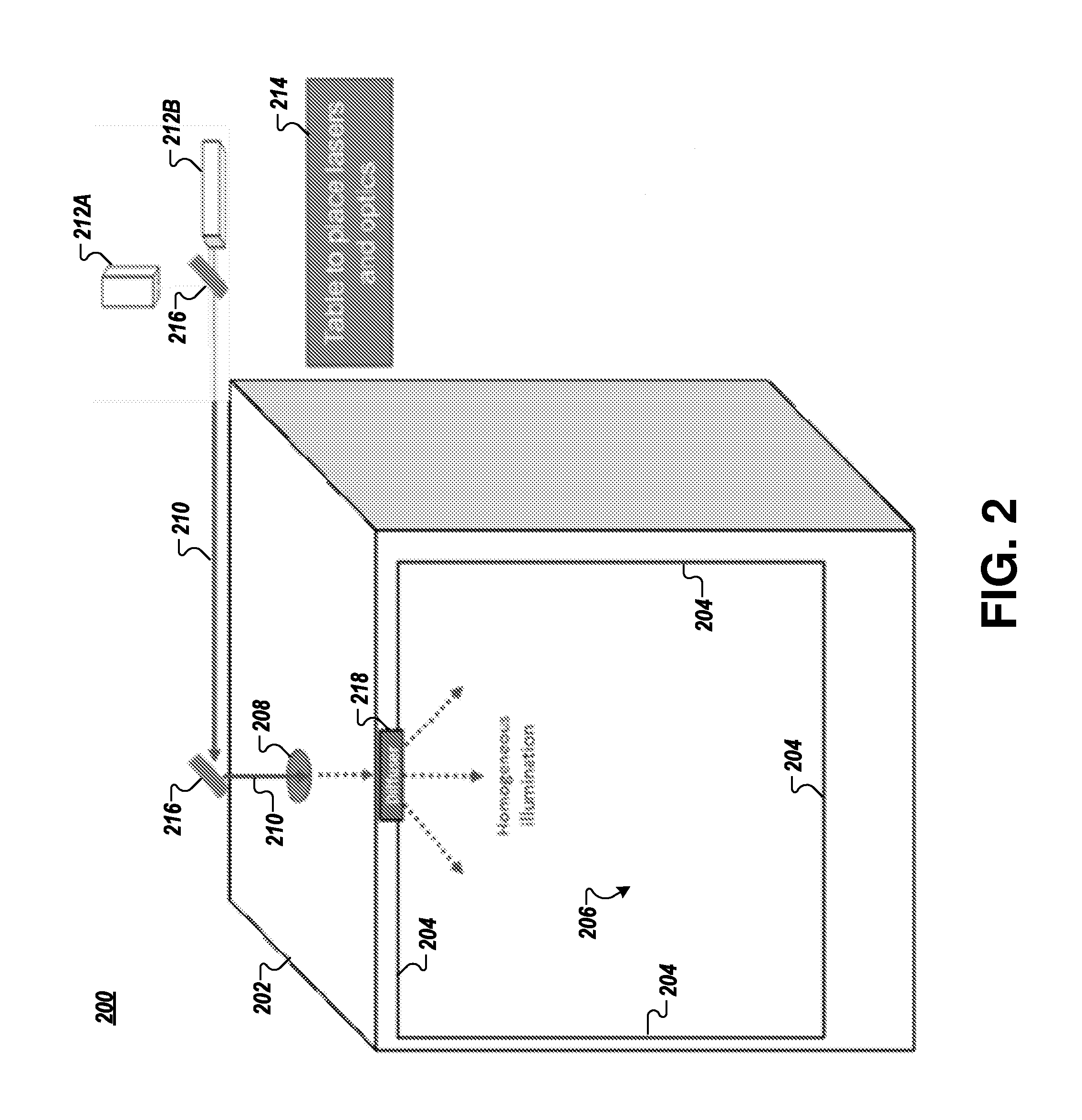Laser-based agriculture system
a technology of solar energy and agriculture, applied in the field of indoor agriculture, can solve the problems of inability to achieve perfect temperature regulation, ineffective use of artificial light sources, and harmful to plant life, and achieve the effects of avoiding the generation of wasted wavelengths, high energy, and high efficiency
- Summary
- Abstract
- Description
- Claims
- Application Information
AI Technical Summary
Benefits of technology
Problems solved by technology
Method used
Image
Examples
Embodiment Construction
[0025]Some embodiments of the present invention will now be described more fully hereinafter with reference to the accompanying drawings, in which some, but not all embodiments of the inventions are shown. Indeed, these inventions may be embodied in many different forms and should not be construed as limited to the embodiments set forth herein; rather, these embodiments are provided so that this disclosure will satisfy applicable legal requirements. Like numbers refer to like elements throughout.
[0026]FIG. 1 provides a graph illustrating the relationship between wavelengths of light and the absorption of the light by pigments in the leaves and other parts of the plant. As shown, plants are most efficient absorbing light in two primary wavelengths: red and blue. However, as one might expect, different plant varieties demonstrate photosynthetic efficiency at different combinations of light wavelengths. Accordingly, different illumination formulae, each containing a combination of two ...
PUM
 Login to View More
Login to View More Abstract
Description
Claims
Application Information
 Login to View More
Login to View More - R&D
- Intellectual Property
- Life Sciences
- Materials
- Tech Scout
- Unparalleled Data Quality
- Higher Quality Content
- 60% Fewer Hallucinations
Browse by: Latest US Patents, China's latest patents, Technical Efficacy Thesaurus, Application Domain, Technology Topic, Popular Technical Reports.
© 2025 PatSnap. All rights reserved.Legal|Privacy policy|Modern Slavery Act Transparency Statement|Sitemap|About US| Contact US: help@patsnap.com



